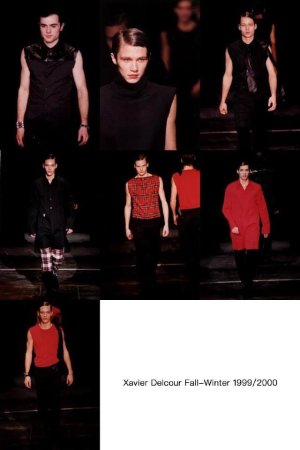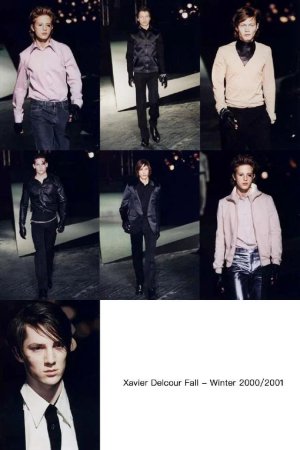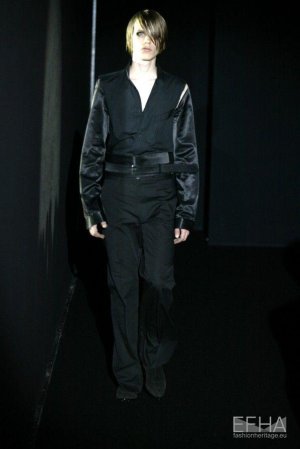I remember when the cool kids used to wear his shiny suits in the early 00’s.
It was that time of La French Touch.
I don’t know if it has well aged but Hedi definitely defined the idea of modernity with his slick fashion.
Btw, I wonder what happened because for me, there’s a real shift in his work post 2004. It was less forward thinking in the concepts somehow.
I think about his YSL show with the long black coat and slick cut.
I feel like at YSL and the early days of Dior, there was almost an intention in creating new clothes. After 2004 (from the FW04), it became really about a wardrobe or resizing of existing elements of a man’s wardrobe much more infused with Rock attitude.
I jumped on the bandwagon of women buying DH with his FW06 but I wish I had one of those slick long coats or kimono-esque jackets.
because he talked about his shift away from design into something more analog (
something that is similar to something else) & low fi ...i think a article he mentioned why he drove a old Rolls Royce and the emotion & the feel of the touch of the hand in the make in comparison to new ( interiors) of cars not giving this same emotion new for newness sake etc
also coming back to YSL for the second time Hedi own words (yahoo style interview/dirkstanden)
I always start all my design projects with writing a synopsis, a perspective around the fundamentals of a House, together with my intentions or intuitions on what should be done.
I conceived a First Reform project at Dior in 2000, and called it “Dior Homme.” I found this name to replace “Christian Dior Monsieur” which was a little old fashioned, and built an aesthetic around it for seven years.
The reform project at Saint Laurent was done and written mainly for my team to understand what I had in mind for the house.
Yves Saint Laurent needed at the time extensive reforms in order to progress on strong foundations.
Another fundamental for Saint Laurent was somehow the evidence or desirability of the Fashion. Yves wanted his ready-to-wear to be wearable and laid back.
All those concepts were quite precisely how I felt right when I came back, and probably a 360 from the context of fashion in 2012, completely absorbed by a certain formalism.
“Saint Laurent Rive Gauche” was an “Idea.” It was also a radical rupture.
Yves wanted to dress the emerging Flower generation, which was his own generation. It was a striking period of Ready-to-Wear for both women and men.
Almost fifty years after, the necessity was for me to transpose this idea, Yves freedom, this age of innocence.’
The return to the original name would also help me to recreate a legitimate and lost balance between the Fashion and leather accessories, besides keeping women’s and men’s fashion side by side. Those were the fundamentals I needed to restore, together with the progressive allure and message of the Rive Gauche, which for me was always the true spirit of Yves and Pierre.
In the end, the first collection was simply an introduction to certain codes.
I approached a laid back “psychedelic rock” silhouette that would emerge later, quite strongly today in music, and generally in fashion. I designed an indie wardrobe, reintroducing natural suede, long bohemian dresses with a vintage feel etc.
This was not in fashion at the time, neither was this attitude and “nonchalance,” or my arty casting. The casting was coming straight from my photography, bleached androgynous indie girls, the girls I know, melancholic, hair undone, almost no make up. They were individuals, not a beauty contest, the kind of intriguing beauty I understand. It was probably not at the time the idea the audience had of a luxury brand. This casting was a radical shift.
So all of these factors were arguably in the picture during the launch of my first collection. The distance, the perception, the new exoticism of California, as a transposition from Morocco, had also a lot to do with it.
My new approach was about realism, and what was around me, but miles away from the prevailing conceptual and immaculate approach of woman’s fashion in 2012.



